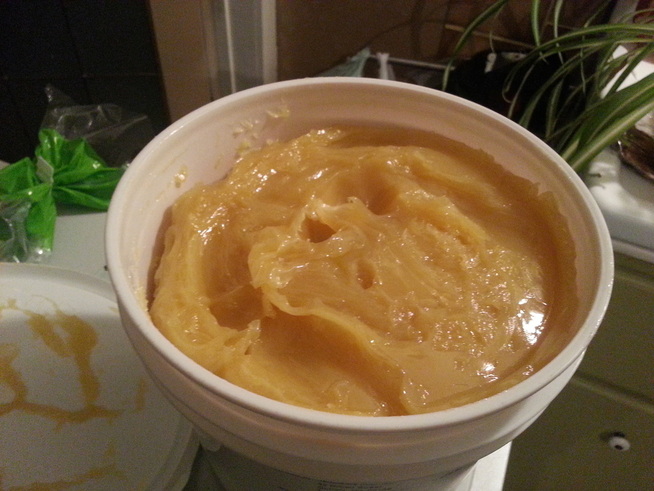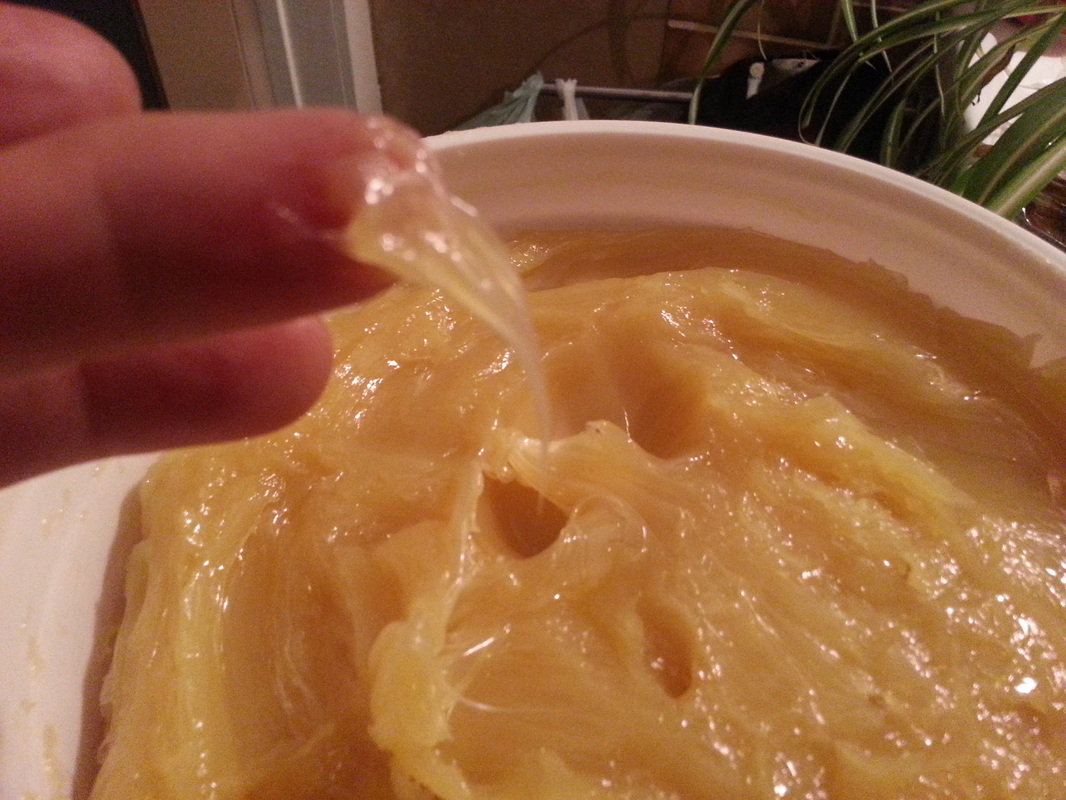 One gallon of commercially prepared clean unscented lanolin.
One gallon of commercially prepared clean unscented lanolin. Lanolin has forty percent alphhydroxy acids. These compounds have been shown to heal and protect skin in a superior fashion. The closest approximation occurring naturally are from plants, but the quantities are minute in comparison to the lanolin sheep produce. Yet, does one ever hear a commercial such as this: "Sheep wax from wool in your premium cosmetics.." uh..nope. Not all breeds of sheep produce lanolin and a few are lanolin free. Home extraction of lanolin involves boiling the wool for a long time, then rendering the water that the wool was boiled in for a long time to reduce it and finally either cooling rapidly to separate the lanolin from the water or skimming. The raw lanolin will have all the properties of cosmetic grade lanolin, but make the person using it smell like the sheep. So, further cleaning is necessary. First the extraction of sweat and salts and then deodorizing. To do this, mix the lanolin/water with a little more water and a pure oil, such as olive, shaking it rapidly while the mixture is warm. The salts and sweat will bind to the water and the oil will pull the other impurities out, leaving a relatively clean lanolin which can be used as is or to formulate skin products. Thank you Creator for making sheep and thank you sheep for the lanolin. Nature is truly astonishing.


 RSS Feed
RSS Feed